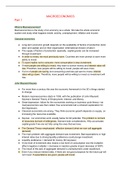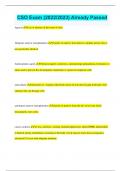College aantekeningen
Macroeconomics Exam Notes
- Vak
- Instelling
- Boek
Everything covered in the first Macroeconomics course is here. Thoroughly explained, with examples and made so that it is very easy to follow. I got a high 9/10 with these notes.
[Meer zien]














